Technical Documentation
SatsFlux Technical Whitepaper
A Multi-Chain Bitcoin Bridging Protocol - Comprehensive technical documentation covering architecture, security, and implementation details.
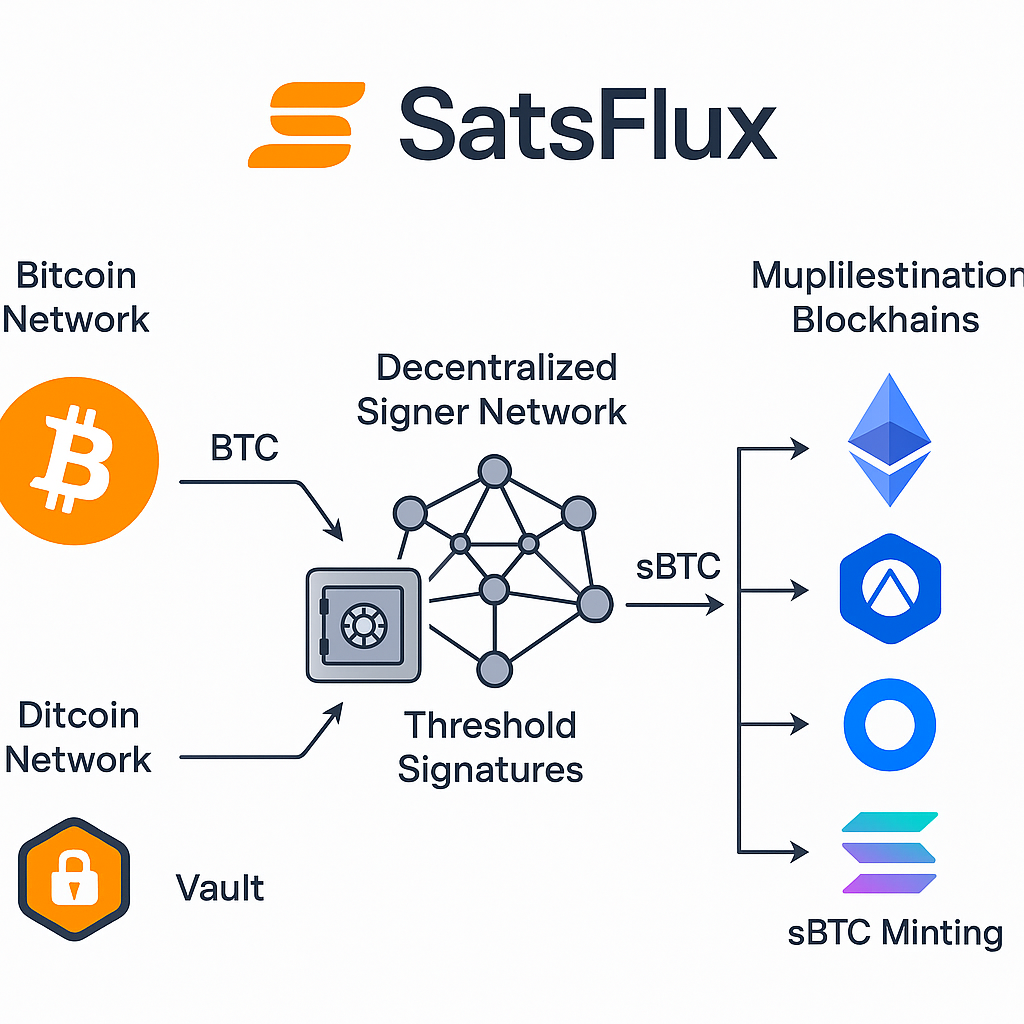
SatsFlux Multi-Chain Bitcoin Bridge Architecture
Executive Summary
Overview of SatsFlux protocol and key features
Architecture Overview
System design and component interactions
Bitcoin Vault Implementation
Taproot-enabled vault and threshold signatures
BTC ↔ sBTC Bridge Design
Cross-chain bridging protocol mechanics
Multi-Chain Routing Layer
Cross-chain coordination and routing
Smart Contract Modules
On-chain contract implementations
Security & Risk Analysis
Threat model and mitigation strategies
Tokenomics
SatsFlux token distribution and utility
SatsFlux is a decentralized protocol that bridges Bitcoin (BTC) to multiple blockchain networks in a secure, trust-minimized way. It introduces sBTC, a 1:1 BTC-backed token that can move across Ethereum, Arbitrum, Base, Solana, and other chains while being fully collateralized by BTC held in a robust cross-chain vault.
The SatsFlux network leverages Bitcoin's latest advancements – including Taproot-enabled threshold signatures (MuSig2 and FROST) – to custody BTC in a multi-party vault with strong security and privacy. A decentralized federation of signers (node operators) collectively controls the BTC vault using threshold cryptography, eliminating any single point of failure.
These signers are economically bonded by the SatsFlux native token (with a fixed 500 billion supply) to align incentives, and can be slashed for misbehavior, ensuring the safety of the peg.
Threshold Signatures
MuSig2 and FROST cryptography for secure multi-party Bitcoin custody
Taproot Integration
Leverages Bitcoin's latest privacy and efficiency improvements
Multi-Chain Support
Native sBTC tokens on Ethereum, Arbitrum, Base, Solana and more
Economic Security
Signers stake SatsFlux tokens and can be slashed for misbehavior
Smart Contracts
Robust on-chain verification and minting/burning logic
Trust Minimized
No centralized custodian, cryptographic and economic guarantees
SatsFlux employs a multi-layered architecture designed for security, scalability, and interoperability. The system consists of four primary components working in concert to enable secure Bitcoin bridging across multiple blockchain networks.
Core Components
Taproot-enabled multi-signature vault using threshold cryptography
Decentralized federation of economically bonded validators
Multi-chain routing and attestation verification system
On-chain sBTC minting, burning, and governance logic
Key Innovations
MuSig2 and FROST for secure multi-party computation
Signer bonding and slashing mechanisms
EVM, Solana, and future blockchain support
Full on-chain auditability and proof verification
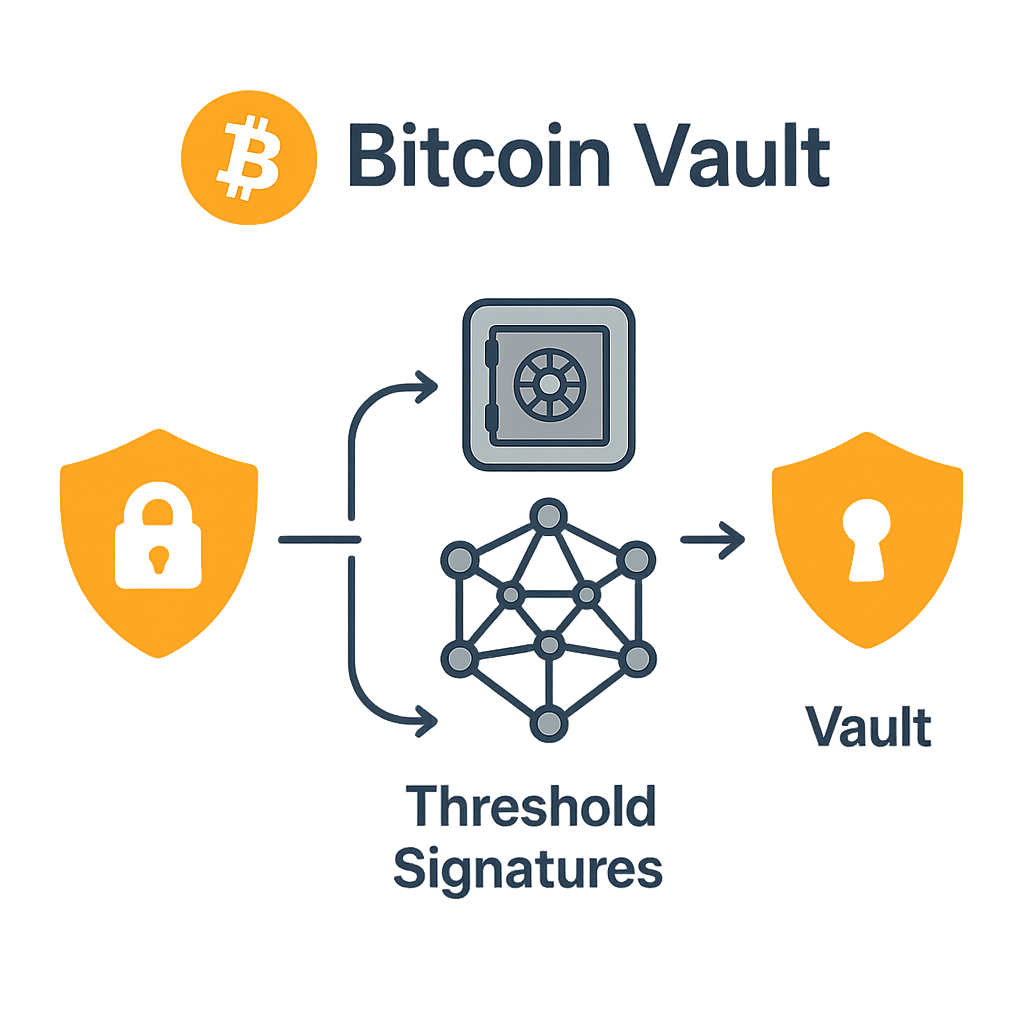
Bitcoin Vault Security Architecture
The SatsFlux Bitcoin vault leverages Bitcoin's Taproot upgrade to implement a sophisticated multi-signature scheme using threshold cryptography. This design eliminates single points of failure while maintaining the security guarantees of the Bitcoin network.
Threshold Signature Schemes
Schnorr-based multi-signature protocol for Bitcoin transactions with key aggregation
Flexible Round-Optimized Schnorr Threshold signatures for enhanced security
Security Properties
Technical Implementation
// Threshold signature verification pseudocode
function verifyThresholdSignature(
message: bytes,
signature: SchnorrSignature,
publicKeys: PublicKey[],
threshold: number
): boolean {
// Aggregate public keys using MuSig2
const aggregatedKey = muSig2KeyAgg(publicKeys);
// Verify Schnorr signature
return schnorrVerify(message, signature, aggregatedKey);
}The SatsFlux bridge operates through a carefully orchestrated process that ensures the security and integrity of Bitcoin deposits while enabling seamless cross-chain transfers. The bridge maintains a 1:1 backing ratio between BTC and sBTC at all times.
Bridge Flow Process
Deposit Process (BTC → sBTC)
User sends BTC to vault address
Wait for Bitcoin network confirmations
Signers create deposit proof
sBTC minted on target chain
Withdrawal Process (sBTC → BTC)
User burns sBTC on source chain
Signers verify burn transaction
Threshold signature creation
BTC sent to user address
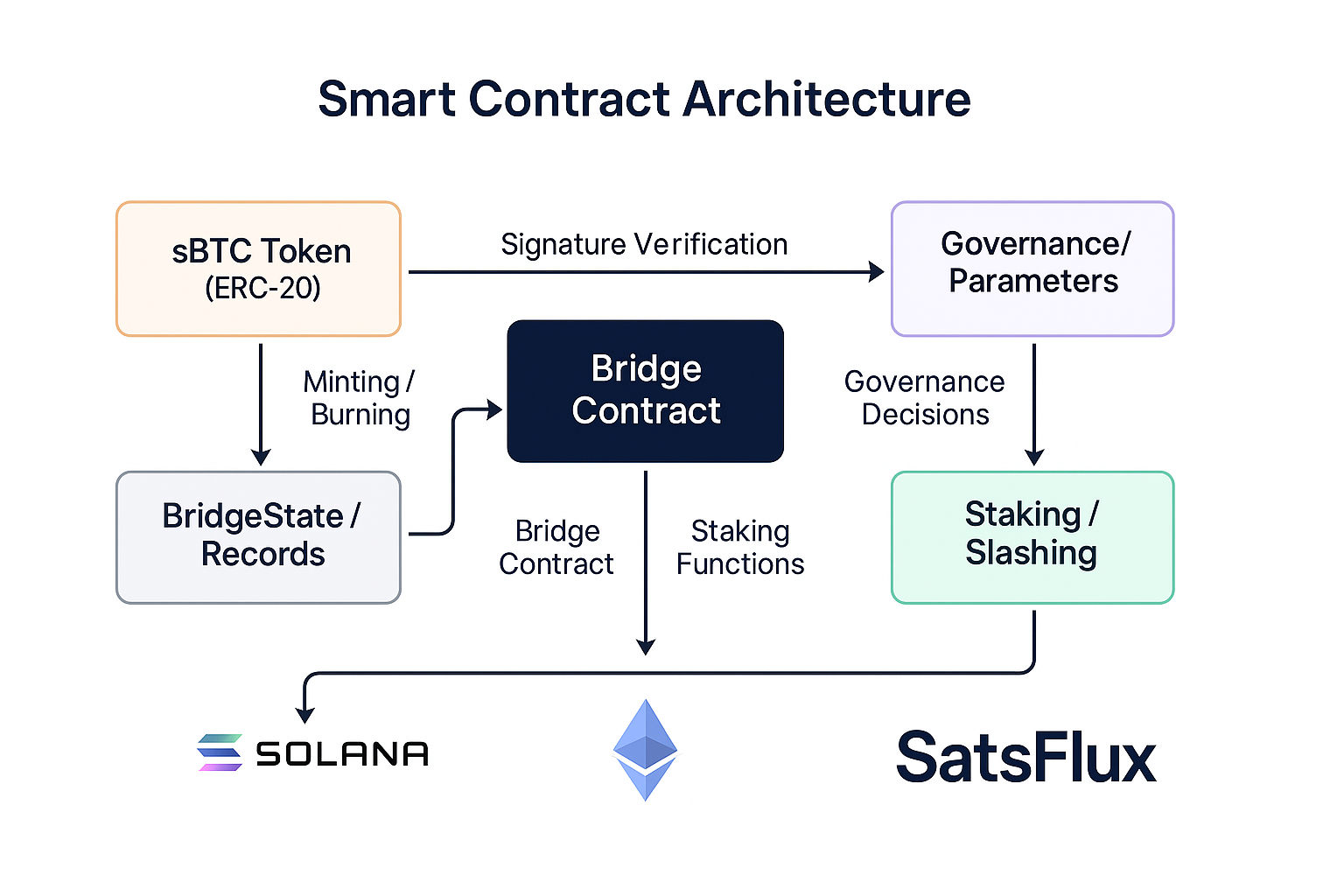
Multi-Chain Smart Contract Architecture
SatsFlux deploys a comprehensive suite of smart contracts across supported blockchain networks. Each contract is optimized for its respective chain while maintaining consistent security and functionality standards.
EVM Contracts (Ethereum, Arbitrum, Base)
ERC-20 compliant token with minting/burning controls
Verifies Bitcoin proofs and manages attestations
SatsFlux token staking and voting mechanisms
Solana Programs
Native Solana token implementation for sBTC
Cross-program invocation for bridge operations
Validator staking and reward distribution
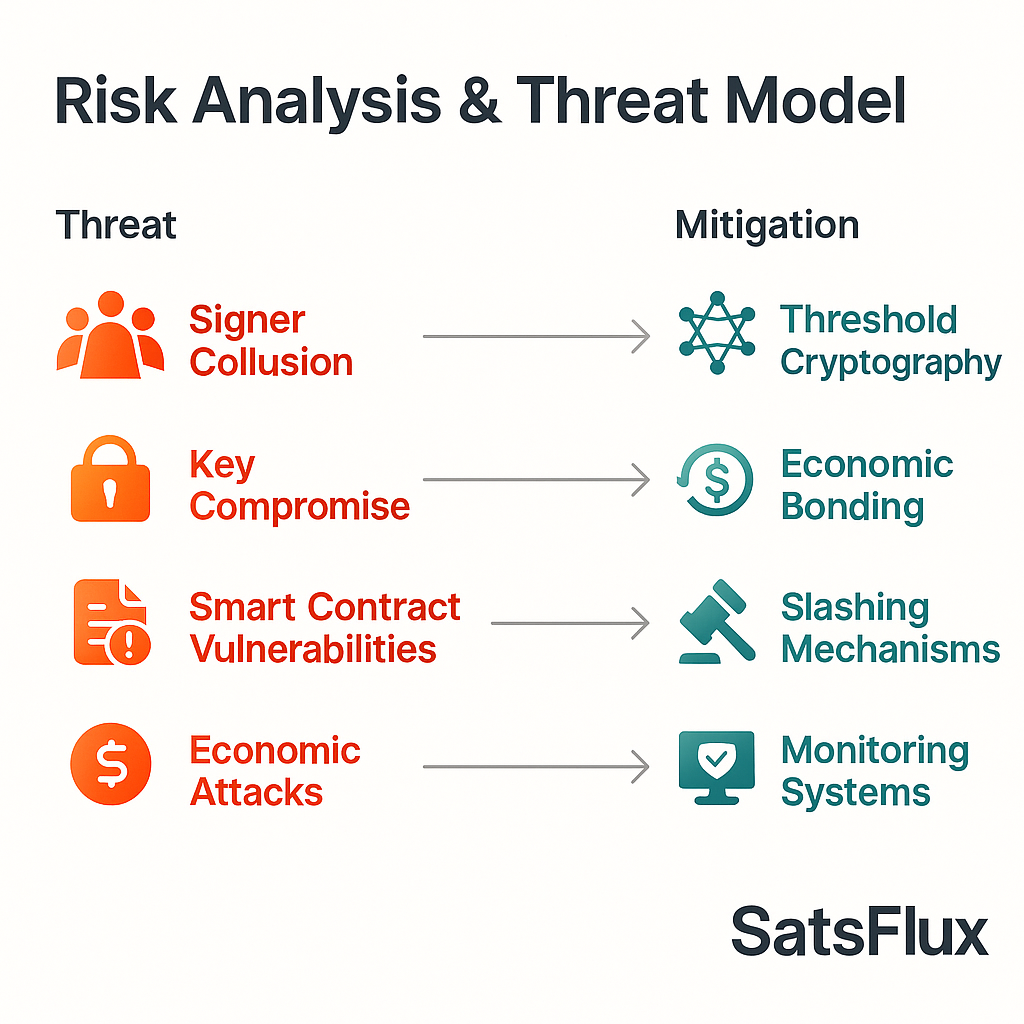
Comprehensive Risk Assessment Framework
SatsFlux implements multiple layers of security to protect user funds and maintain system integrity. Our security model addresses both cryptographic and economic attack vectors through comprehensive risk assessment and mitigation strategies.
Security Measures
No single party can access vault funds
Signers stake tokens as collateral
Penalties for malicious behavior
Emergency pause mechanisms
Risk Factors
Potential bugs in contract code
Coordinated malicious behavior
Cross-chain communication issues
Economic incentive misalignment
SatsFlux Token Distribution & Utility Model
The SatsFlux token serves multiple critical functions within the protocol ecosystem, including governance, security bonding, and fee distribution. With a fixed supply of 500 billion tokens, the economic model is designed to align stakeholder incentives with protocol security and growth.
Token Distribution
Token Utility
Vote on protocol upgrades and parameters
Collateral for validator participation
Share in bridge fee revenues
Earn rewards for network security
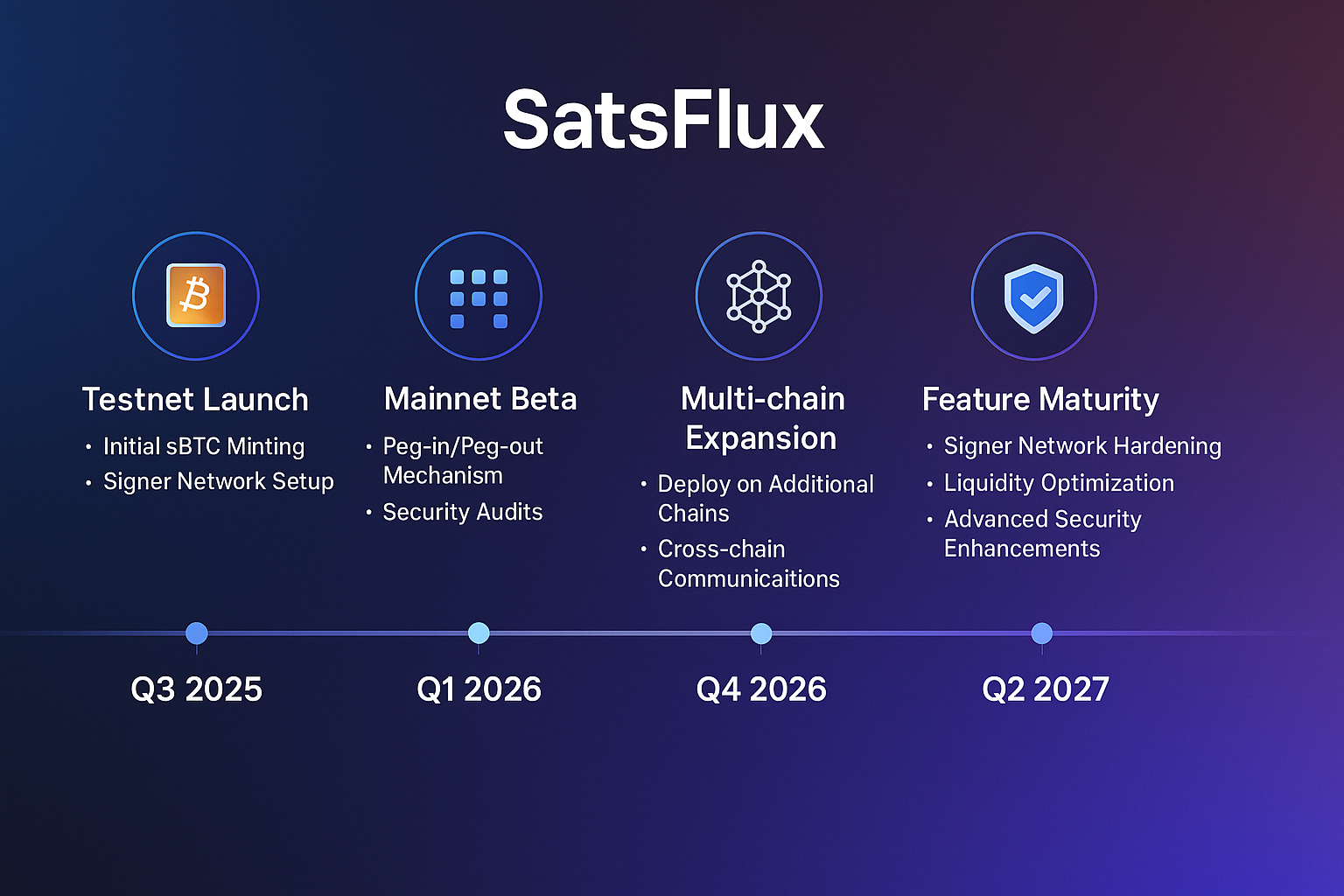
SatsFlux Development Timeline & Milestones
Core protocol implementation, signer network setup, initial testing
Comprehensive security audits, bug bounty program, final testing
Production deployment, initial chain support (Ethereum, Arbitrum)
Base, Solana integration, enhanced routing layer